► Facelifted 2024 Mazda 2 Hybrid review
► A Toyota Yaris HEV – with a Mazda face
► We drive clever petrol-electric mini
There aren’t many hybrid superminis to choose from and probably for good reason. Small cars are notoriously difficult to make profits on – and that conundrum deepens exponentially if you develop them with complicated petrol-electric powertrains. So for good reason Mazda turned to hybrid masters Toyota when it pondered the need to electrify its smallest car.
One of Toyota’s many strategic partnerships led to 2022’s Mazda 2 Hybrid – a Yaris Hybrid wearing a Mazda badge. There was precious little re-engineering or bodywork changes to keep a lid on costs. It really was a case of swapping the Toyota roundel for a Mazda logo and it sold in modest numbers, accounting for less than a third of 2 supermini sales in the UK last year.
Fast forward two years, and they’re putting that right… a bit. There’s still precious little change, but the designers have had the chance to replace the front grille and bumper to give a more Mazda-y face, and they’ve changed the rear panel between the taillights, too. You won’t mistake this for anything but a Yaris in Hiroshima drag, but at least it looks a little more distinct from its Toyota brethren.
The hybrid supermini will sell alongside the regular Mazda 2 hatchback, giving the company a strong footprint in the small hatchback sector – at just the right time, as rivals such as Ford are abandoning superminis like the Fiesta in preference for small crossovers. It’s one of the cheapest hybrid cars you can buy.
At a glance
Pros: Scintillating economy, rare hybrid skills in a mini package, stout build quality
Cons: Proximity to cheaper Toyota Yaris Hybrid, hardly likely to raise your pulse
What’s new?
Really, the only thing that’s new for 2024 is that lightest of wardrobe refreshes. A more typical Mazda five-pointed front grille is transplanted on to the snout of the Yaris, better identifying the 2 Hybrid as a family member rather than an outcast.
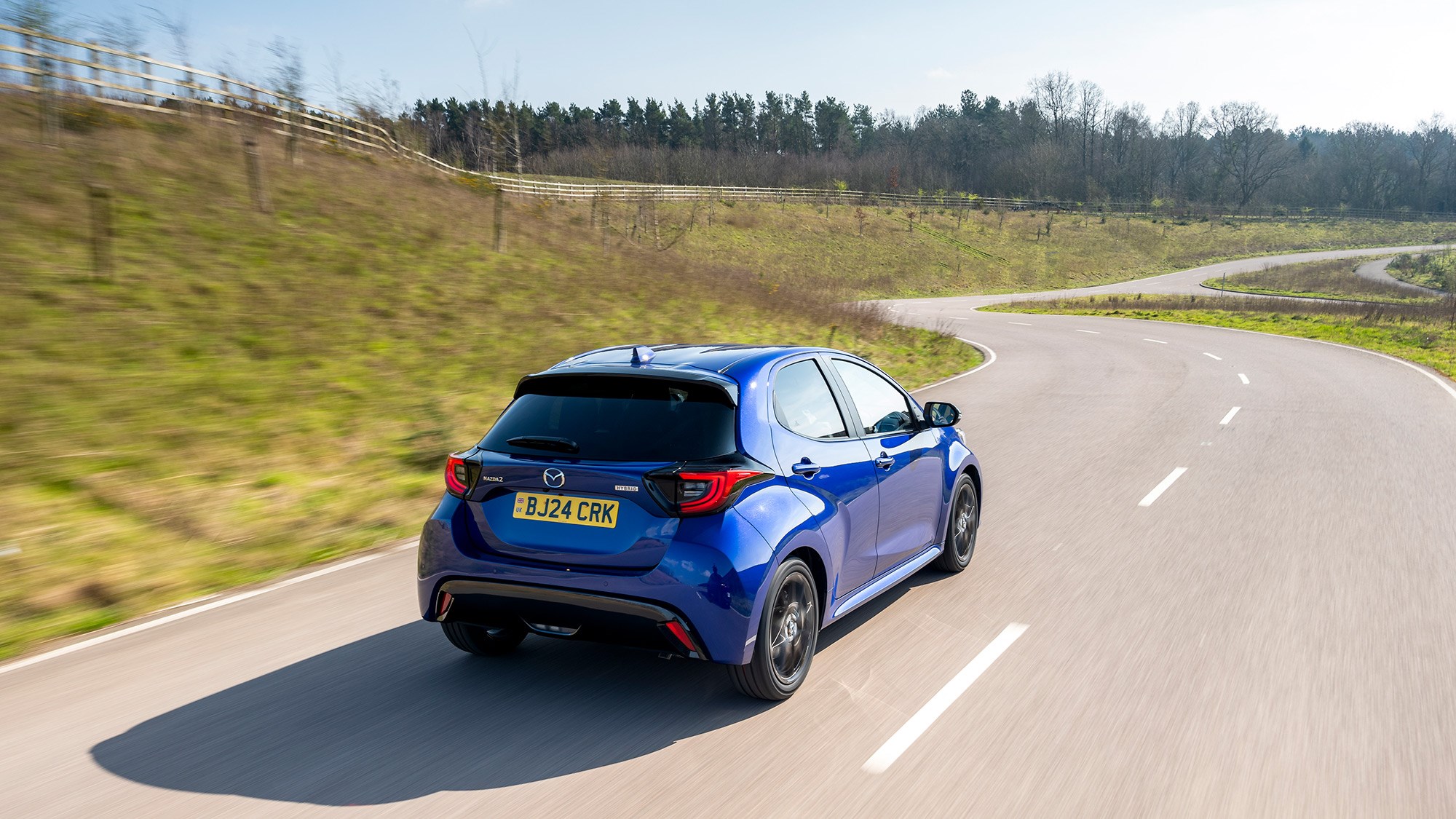
The rear end is distinguished by a panel between the rear lights that is body-coloured, where the Yaris’s is gloss-black, and it’s subtly reprofiled too. European design director Jo Stenuit, who oversaw the makeover from his studio in Germany, points out that different lettering and script for the badges has a subtle effect, too.
Let’s not kid ourselves. This remains a clone of the Yaris and it rolls off the same production line in France (making delivery times usefully quicker than for Japanese-built Mazdas). Peer through the standard-fit alloys and you’ll see the brake callipers clearly branded Toyota. There’s no hiding this supermini’s real origins…
What are the specs?
The technical blueprint of the Mazda 2 Hybrid is completely unchanged from what went before. There’s the same 91bhp 1.5-litre three-cylinder petrol engine, aided and abetted by a 59kW electric motor driving the front wheels through a continuously variable automatic transmission.
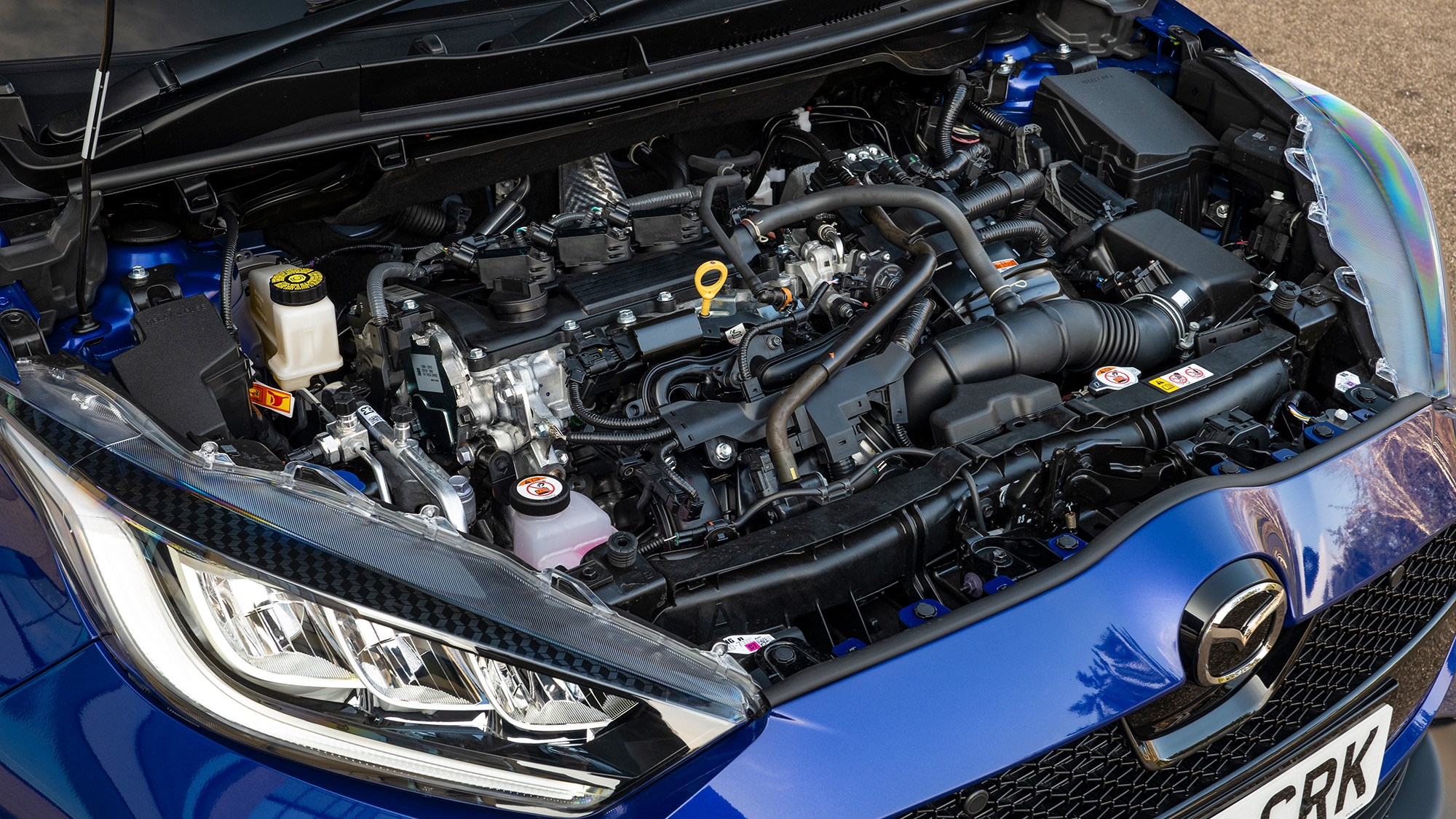
The combined grunt of the petrol and electric motors peaks at 114bhp, enough for a respectable 0-62mph time of 9.7 seconds.
Of rather more importance to most buyers will be the net fuel efficiency gains from Toyota’s clever parallel hybrid tech: Mazda claims average economy of between 67-74mpg, with CO2 emissions dipping to 87-98g/km to trim your tax bills. Top tip for penny-pinchers: pick the smallest 15in wheels to achieve the best, most angelic figures.
This is a self-charging hybrid, meaning you never have to plug it in to top up the battery. Mazda engineers claim it can run on electric mode for up to 80% of the time around town and even in mixed driving across urban and rural conditions, we saw EV operation recorded for 42% of our driving time.
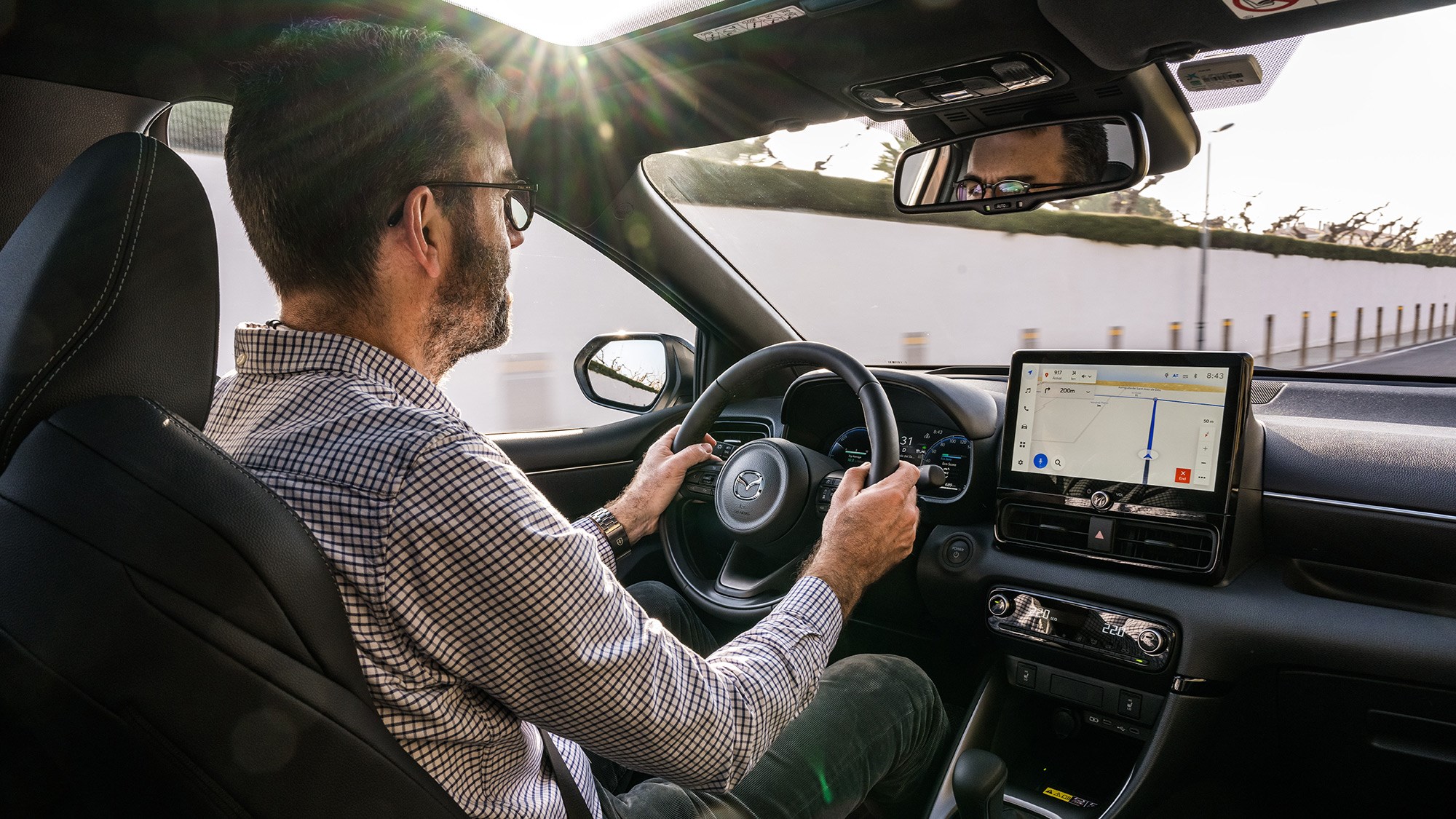
How does it drive?
This is an unobtrusively talented small car. It’s remarkably unremarkable: it’s really a question of jumping in, prodding the start button and driving the Mazda 2 Hybrid as you would any small automatic.
The CVT gearbox can send the little triple’s revs soaring if you drive it like you stole it, but the reality is that a more measured, sensible driving approach is rewarded by a calm, refined drive. You can criticise the banded transmission if you go looking for soaraway engine tone, but we reckon most non-enthusiast drivers will be none the wiser.
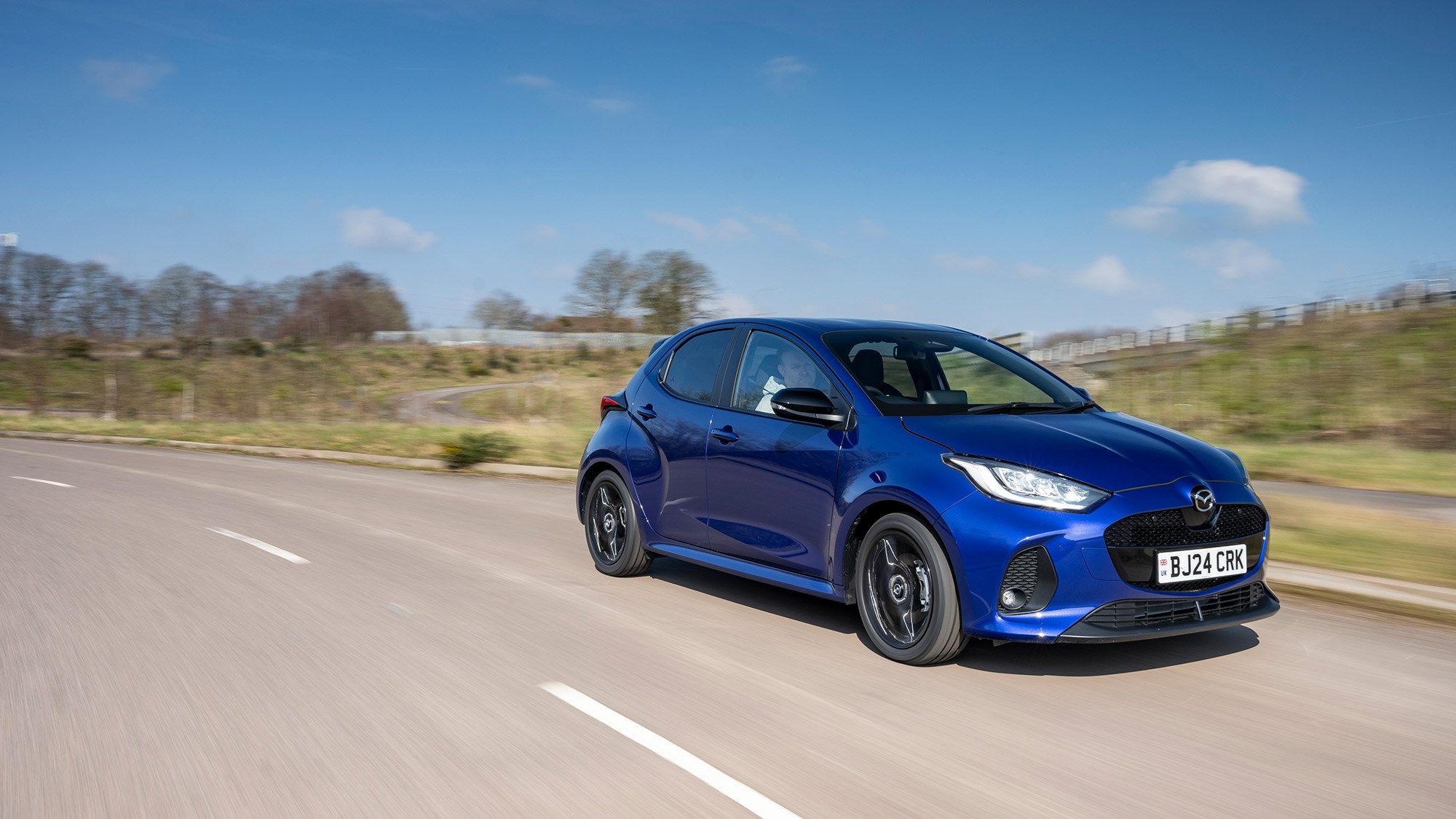
Performance is perfectly adequate, the software cleverly shuffling power source depending on the speed, load and position of your right foot. You can toggle between three driving modes – Normal, Sport and Eco – depending on your mood, setting the car’s systems for different requirements. There’s also an EV driving mode if you want to creep away silently from your driveway first thing in the morning and avoid disturbing the neighbours.
Ride quality proved pretty calming on the Spanish roads around Barcelona at the European launch. Our test cars were equipped with the largest 17-inch 205/45 tyres and, on the odd bumpier section, they did throw up a little more road patter.
What about the interior?
It’s all fine in here, but there’s nothing to get the pulse raised. If you don’t associate the Yaris interior with design flair, we won’t blame you. It’s pretty plasticky and generic onboard, but we can vouch for the quality of fit and finish.
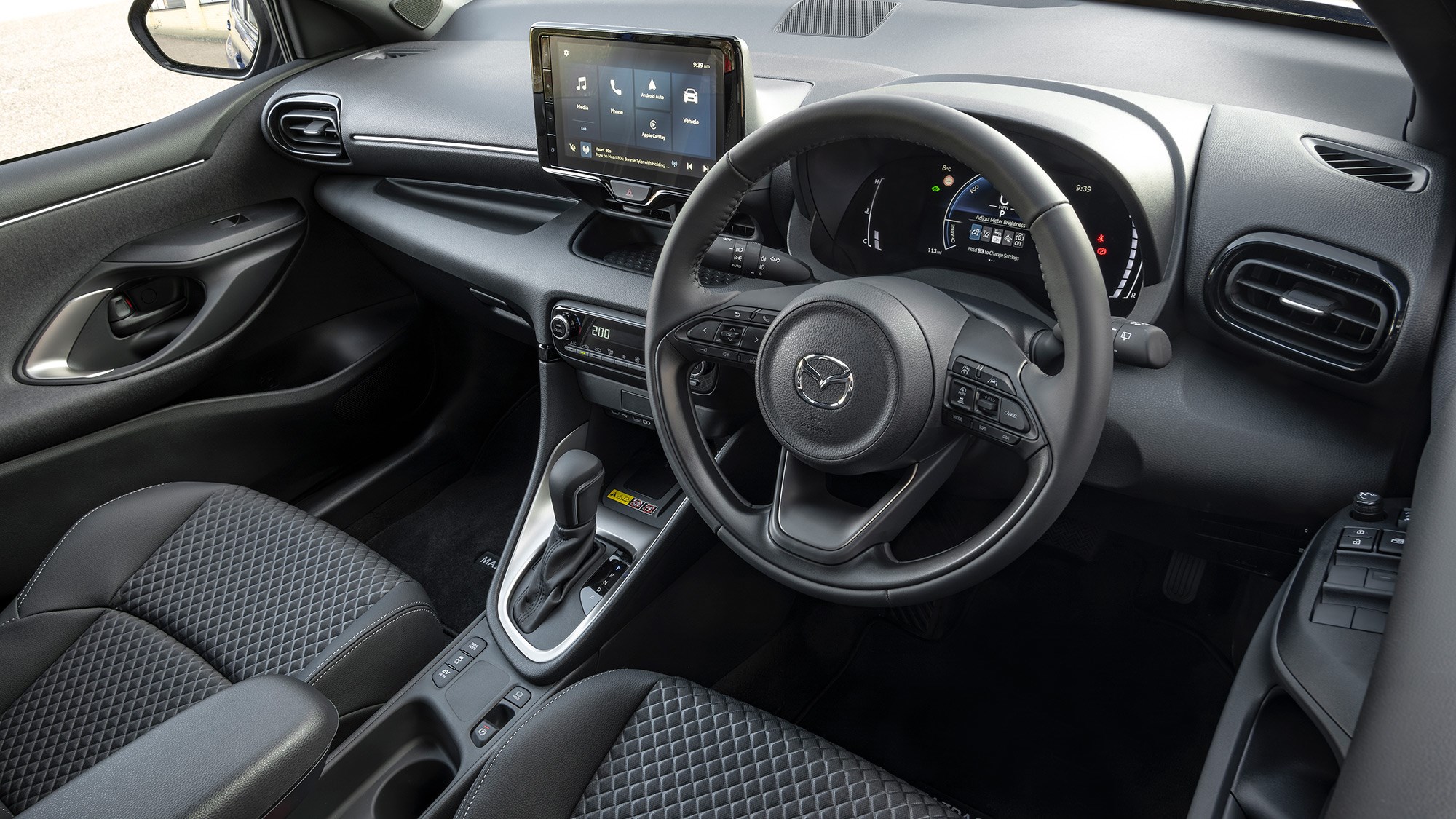
Everything’s well built and solid and in this day and age it’s saying something that we can celebrate some good old-fashioned chunky Japanese physical switches for features like the heated seats. There is a larger touchscreen inside, but it’s happily only controlling the infotainment and mapping.
The boot is a reasonable size at 286 litres and it’s a decent, square shape for a fair carrying capacity. There is no space for a spare wheel beneath the boot floor, owing to the battery and hybrid gubbins.
Before you buy (trims and rivals)
British buyers can pick from four trim levels: Centre Line, Exclusive Line, Homura and Homura Plus grades (we are denied the cheapest Prime Line model sold on the Continent).
Every Mazda 2 Hybrid comes with wireless Apple CarPlay and Android Auto, plus a new colour touchscreen of varying dimensions depending upon where you land on the trim ladder. Pick Exclusive to add auto-folding mirrors, blindspot monitoring and front and rear parking sensors, while Homura grade brings digital instruments, rear-view camera and adaptive cruise control too.
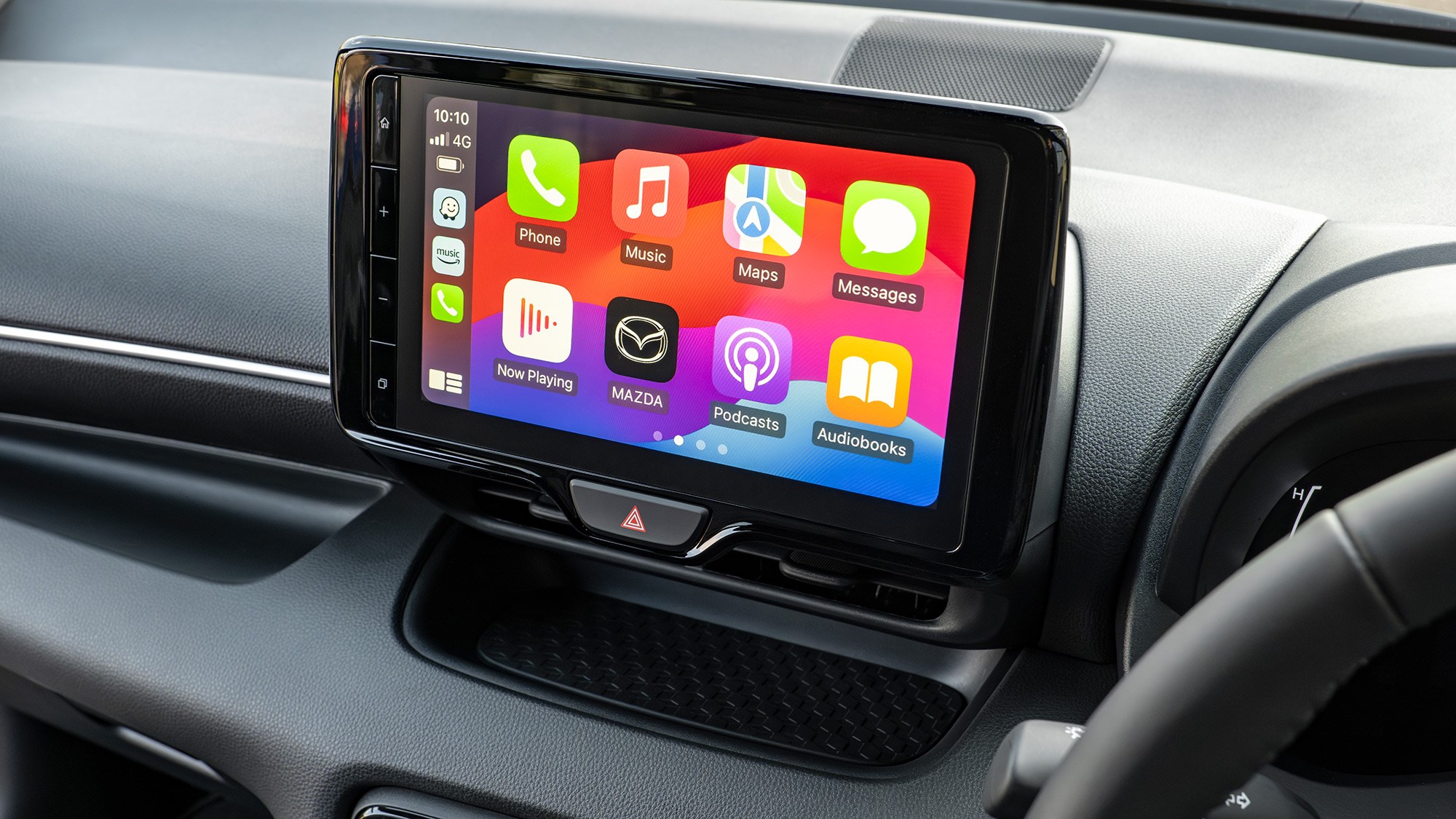
Only the Homura Plus comes with integrated navigation (all other models rely on your smartphone), a head-up display, wireless phone charging and a panoramic glass roof. Be warned: the full-length sunroof is bright and airy, but it does clobber headroom, especially for rear-seat passengers. The front seats offer generous accommodation in all versions, though we’d prefer for the telescopic steering wheel to have a greater array of adjustment.
The entry price starts at £24,130, while the range-topping Mazda 2 Hybrid Homura Plus tops out at £29,230 in the UK. You’ll have noticed that these prices are around £1.5k above the mechanically identical Toyota Yaris Hybrid.
Verdict: Mazda 2 Hybrid
As a fuel-saving supermini, the Mazda 2 Hybrid is smartly engineered. Earlier experience of its predecessor suggests 60-70mpg is easily achieved in typical mixed driving and even in harsher hilly sprints at its European launch, we couldn’t depress fuel consumption much below 48mpg.
It’s a clever supermini and competes in a very small field, trumping the £26k+ Honda Jazz Hybrid. If you regularly pootle around town but want a hybrid rather than a range-restricted EV, we’d say the Mazda 2 Hybrid is a shrewd buy. Just check the similar Yaris Hybrid isn’t just as good for less money first.